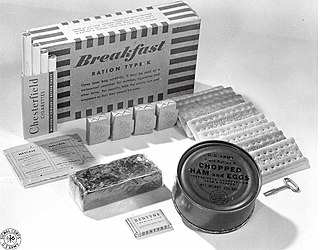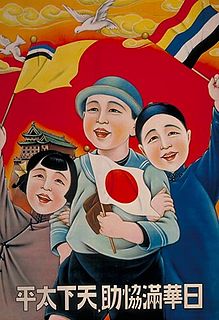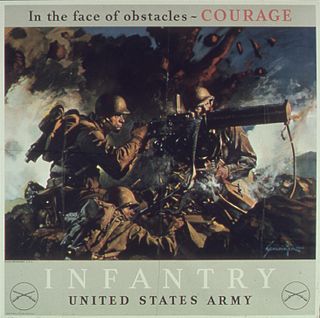
Fruitarianism is a diet related to veganism that consists primarily of consuming fruits and possibly nuts and seeds, but without any animal products. Fruitarian diets are subject to criticism and health concerns.

The Russian Revolution was a period of political and social revolution that took place in the former Russian Empire which began during the First World War. This period saw Russia abolish its monarchy and adopt a socialist form of government following two successive revolutions and a bloody civil war. The Russian Revolution can also be seen as the precursor for the other European revolutions that occurred during or in the aftermath of WWI, such as the German Revolution of 1918.

A Meal, Ready-to-Eat (MRE) is a self-contained, individual field ration in lightweight packaging purchased by the United States Department of Defense for its service members for use in combat or field conditions where other food is not available. While MREs should be kept cool, they do not need to be refrigerated. The MRE replaced the canned MCI, or Meal, Combat, Individual rations, in 1981, and is the intended successor to the lighter LRP ration developed by the US Army for Special Forces and Ranger patrol units in Vietnam. MREs have also been distributed to civilians during natural disasters.

A fad diet is a diet that becomes popular for a short time, similar to fads in fashion, without being a standard dietary recommendation, and often making unreasonable claims for fast weight loss or health improvements. There is no single definition of what is a fad diet. The term fad diet encompasses a variety of diets with different approaches and evidence bases, and thus different outcomes, advantages, and disadvantages.

United States military ration refers to various preparations and packages of food provided to feed members of the armed forces. U.S. military rations are often made for quick distribution, preparation, and eating in the field and tend to have long storage times in adverse conditions due to being thickly packaged and/or shelf-stable. The current ration is the Meal, Ready-to-Eat (MRE).

The K-ration was an individual daily combat food ration which was introduced by the United States Army during World War II. It was originally intended as an individually packaged daily ration for issue to airborne troops, tank crews, motorcycle couriers, and other mobile forces for short durations. The K-ration provided three separately boxed meal units: Breakfast, ʽLunchʼ and Dinner.

A field ration is a type of prepackaged or canned military ration. Field rations are distinguished from garrison rations by virtue of being designed for minimal preparation in the field, as well as for long shelf life. They contain canned, vacuum-sealed, pre-cooked or freeze-dried foods, powdered beverage mixes or concentrated food bars. Many field rations contain meat as one of their main courses, but countries such as the United States offer vegetarian options as well. A WWI term, the "iron ration" is a soldier's dry emergency rations. The term MRE is sometimes used synonymously with field ration but it more accurately describes a specific type from the United States. Most armed forces in the world today now field some form of pre-packaged combat ration, often suitably tailored to meet national or regional cuisines.

Military chocolate has been a part of the standard United States military ration since the original Ration D or D ration bar of 1937. Today, military chocolate is issued to troops as part of basic field rations and sundry packs. Chocolate rations served two purposes: as a morale boost, and as a high-energy, pocket-sized emergency ration. Military chocolate rations are often made in special lots to military specifications for weight, size, and endurance. The majority of chocolate issued to military personnel is produced by the Hershey Company.

During World War I, the German Empire was one of the Central Powers. It began participation in the conflict after the declaration of war against Serbia by its ally, Austria-Hungary. German forces fought the Allies on both the eastern and western fronts, although German territory itself remained relatively safe from widespread invasion for most of the war, except for a brief period in 1914 when East Prussia was invaded. A tight blockade imposed by the Royal Navy caused severe food shortages in the cities, especially in the winter of 1916–17, known as the Turnip Winter. At the end of the war, Germany's defeat and widespread popular discontent triggered the German Revolution of 1918–1919 which overthrew the monarchy and established the Weimar Republic.

Propaganda in Imperial Japan, in the period just before and during World War II, was designed to assist the regime in governing during that time. Many of its elements were continuous with pre-war themes of Shōwa statism, including the principles of kokutai, hakkō ichiu, and bushido. New forms of propaganda were developed to persuade occupied countries of the benefits of the Greater Asia Co-Prosperity Sphere, to undermine American troops' morale, to counteract claims of Japanese atrocities, and to present the war to the Japanese people as victorious. It started with the Second Sino-Japanese War, which merged into World War II. It used a large variety of media to send its messages.

Foods of the American Civil War were the provisions during the American Civil War with which both the Union and Confederate armies struggled to keep their soldiers provisioned adequately.

During active American involvement in World War II (1941–45), propaganda was used to increase support for the war and commitment to an Allied victory. Using a vast array of media, propagandists instigated hatred for the enemy and support for America's allies, urged greater public effort for war production and victory gardens, persuaded people to save some of their material so that more material could be used for the war effort, and sold war bonds. Patriotism became the central theme of advertising throughout the war, as large scale campaigns were launched to sell war bonds, promote efficiency in factories, reduce ugly rumors, and maintain civilian morale. The war consolidated the advertising industry's role in American society, deflecting earlier criticism. The axis leaders were portrayed as cartoon caricatures to make them appear foolish and idiotic.
Wartime Nutrition is a 1943 short film. One of the Allied propaganda films of World War II it urged civilians on the United States home front to eat healthier and follow the wartime ration guidelines.

Britain re-created the World War I Ministry of Information for the duration of World War II to generate propaganda to influence the population towards support for the war effort. A wide range of media was employed aimed at local and overseas audiences. Traditional forms such as newspapers and posters were joined by new media including cinema (film), newsreels and radio. A wide range of themes were addressed, fostering hostility to the enemy, support for allies, and specific pro war projects such as conserving metal and growing vegetables.
Between 1941 and 1945, during World War II, Walt Disney was involved in the production of propaganda films for the U.S. government. The widespread familiarity of Disney's productions benefited the U.S. government in producing pro-American war propaganda in an effort to increase support for the war.

Beyond the Line of Duty is a 1942 American short propaganda film, directed by Lewis Seiler. The documentary film reenacted the life and career of United States Army Air Corps Captain Hewitt T. "Shorty" Wheless.
Based on advances in food research technology, and methodologies for the improvement of U.S. military soldiers' overall health and nutritional status, the history of military nutrition in the United States can be roughly divided into seven historical eras, from the founding of the country to the present day. Through the research and guidance of medical and military professionals, rations and packaging have been consistently and dramatically improved.
Military nutrition has evolved over time. In the past, armies that ventured beyond their supply lines lived off the land, by pillaging food from the people whose land the army occupied, or requisitioning it. Often more soldiers died of disease that was exacerbated by malnutrition than from combat.
World War II changed the possibilities for animation. Prior to the war, animation was mostly seen as a form of family entertainment. The attack on Pearl Harbor was a turning point in its utility. On December 8, 1941, the United States Army began working with Walt Disney at his studio, stationing Military personnel there for the duration of the war. The Army and Disney set about making various types of films for several different audiences. Most films meant for the public included some type of propaganda, while films for the troops included training and education about a given topic.

Preventive nutrition is a branch of nutrition science with the goal of preventing or delaying or reducing the impacts of disease and disease-related complications. It is concerned with a high level of personal well-being, disease prevention, and diagnosis of recurring health problems or symptoms of discomfort which are often precursors to health issues. Preventive nutrition may assist in prolonging the onset of non-communicable diseases and may allow adults to experience more "healthy living years" later in life. The need for preventive nutrition continues to grow as the overweight and obese population numbers steadily rise within the childhood to adult populous, as the numbers have increased over the last 40 years. To educate the public about preventive nutrition, each social structure has its own way to communicate what preventive nutrition is within its own society, this is done through either a public health forum, government programs and policies or nutritional education. In the United States, preventive nutrition is taught to the public through the use of the food pyramid or MyPlate initiatives.














